Most Desert Animals Are Most Active At Night; What Is This Characteristic Called?
Nocturnal animals list with pictures and interesting facts…
Nocturnal Animals
Nocturnal animals are animals that are active at night. They often have special adaptions for nocturnal living, including large eyes for low-lite vision, and heightened senses of hearing and smell. Examples of nocturnal animals include aardvarks, bats, moths, owls, raccoons, Tasmanian devils and wolves.
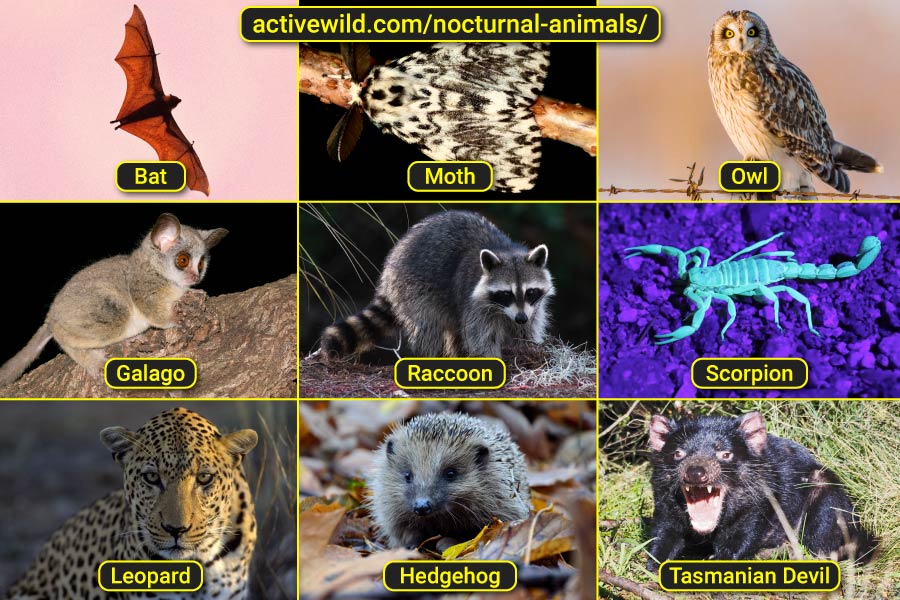
Scroll down to encounter our superlative 20 list of nocturnal animals…
Diurnal & Crepuscular Animals
The reverse of nocturnal is diurnal. Diurnal animals are animals that are active during the twenty-four hours. Crepuscular animals are active at twilight (i.e. during the dawn and dusk).
Nocturnal Animals List
What's your favorite nocturnal animal? Are there whatever you think we should add to this listing? Let the states know in the comments section; nosotros'd honey to hear from you!
Aardvark
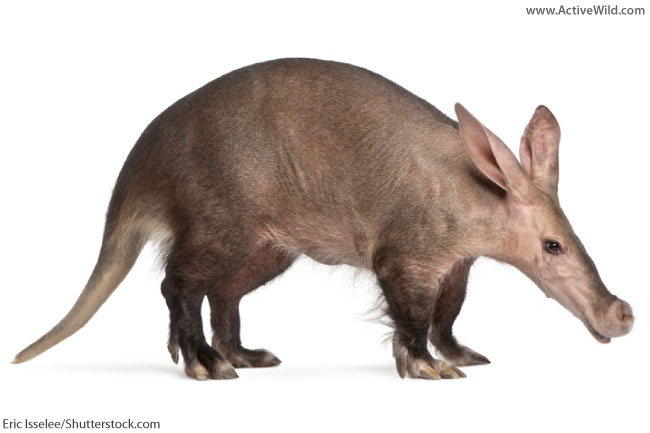
- Blazon of animal: Mammal
- Where constitute: Africa
The aardvark is a nocturnal mammal institute throughout much of sub-Saharan Africa (the area southward of the Sahara Desert). It eats ants and termites, which it locates using its sensitive nose and hearing. The aardvark uses its powerful claws to break open insect nests and likewise to dig the burrows in which it lives.
- You can find out more than about aardvarks on this page: Aardvark facts
Aye-Aye
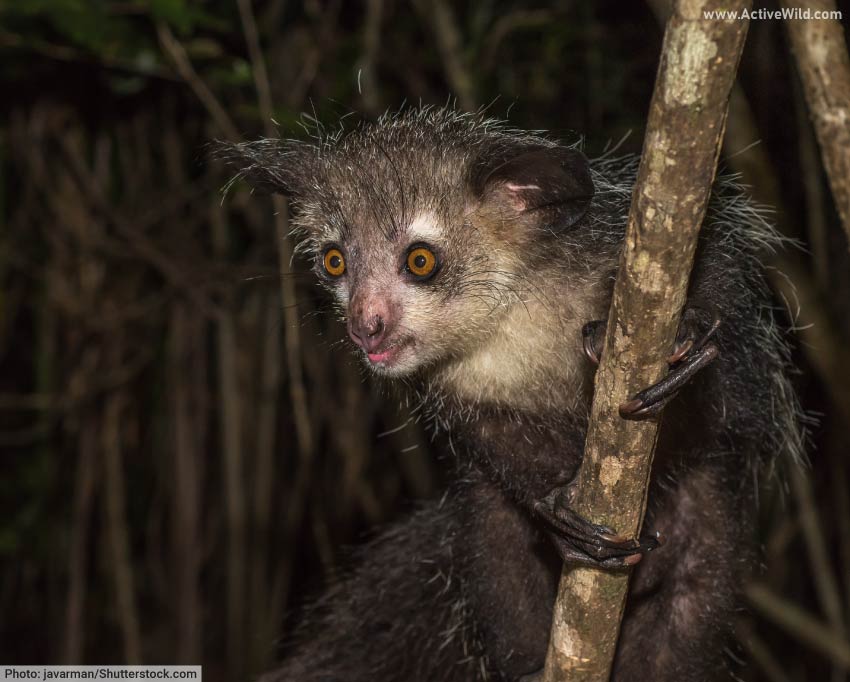
- Blazon of beast: Mammal (Lemur)
- Where institute: Madagascar
The yep-yeah is a lemur that lives in the rainforests of Republic of madagascar, a large isle located in the Indian Ocean off the coast of E Africa.
The yeah-yep, which reaches a length of around three ft. (90 cm), including its long tail, is the world'southward largest nocturnal primate.
This dark-time forager finds nutrient by tapping on trees; it tin can tell by the sound if there's a tasty insect grub hidden beneath the bark.
Some people believe that the aye-aye brings bad luck, and this amazing nocturnal brute has faced persecution due to these behavior. This, and habitat loss, are amongst the reasons that the aye-aye is at present endangered.
- You tin detect out more most aye-ayes on this page: Aye-Yeah Facts
Badgers
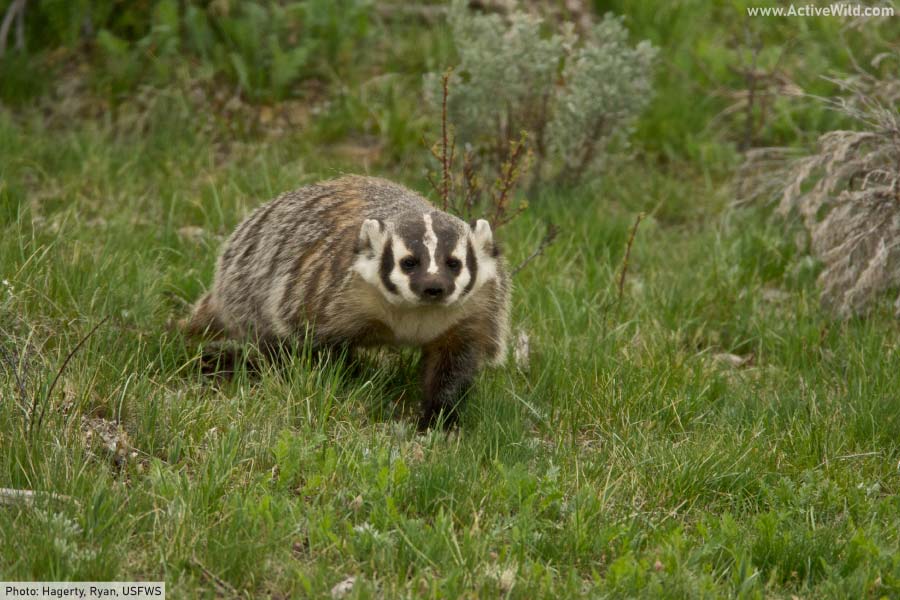
- Type of animal: Mammal (members of the family Mustelidae)
- Where found: Europe, Due north America, Asia, Africa
In that location are fifteen badger species, all of which belong to the family Mustelidae (the weasel family unit). Well-known badger species include the American badger, European badger and honey annoy (an African species).
Badgers are powerful burrowing animals with short legs and large claws. They spend the day in burrows known every bit setts and sally at nighttime to forage and hunt.
You can detect out more about badgers on the following pages:
- American Badger Facts
- Honey Badger Facts
Bats
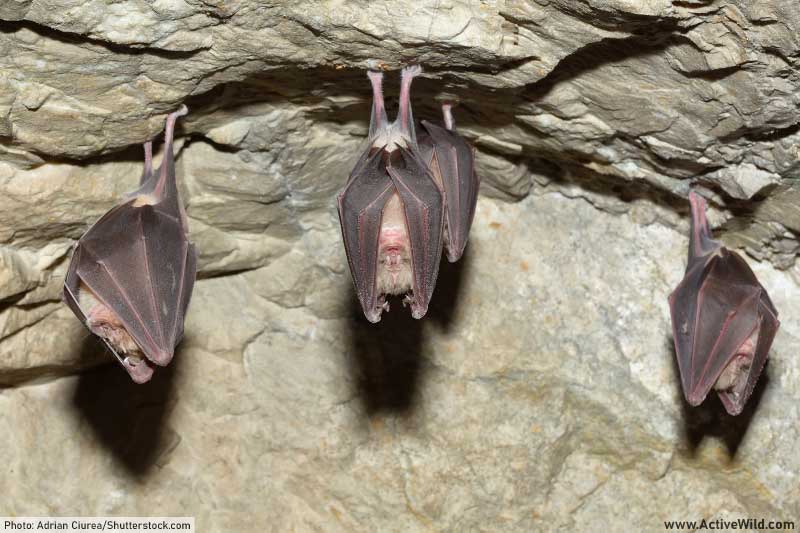
- Type of brute: Mammals (order Chiroptera)
- Where found: Every continent except Antarctica
Bats are some of the best-known nocturnal animals. Due to their nocturnal lifestyle, bats are oft associated with witchcraft.
Bats are mammals whose wings consist of skin stretched out on elongated fingers. The ane,400 or and so living bat species make up the society Chiroptera.
There are 2 main types of bats: megabats, which are often known equally fruit bats, and microbats, which find their casualty using echolocation.
You lot can observe out more about bats on the following pages:
- Bats: The Ultimate Guide
- Vampire Bat Facts
Catfish
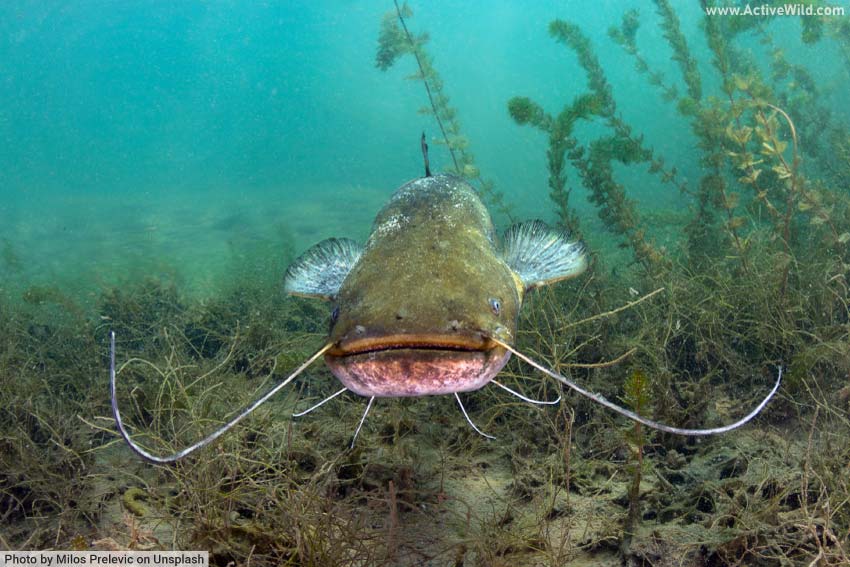
- Type of animal: Fish (club Siluriformes)
- Where found: Every continent except Antarctica
Catfish are fish in the order Siluriformes. They are named after the long, cat's whisker-like barbels present on many (but not all) catfish species. (A barbel is a long, thin, sensory organ located near a fish'south mouth.)
Big catfish, such as the wels catfish, a species constitute in Europe, can attain lengths of up to 16 ft / (5 grand); other species are much smaller.
Many, but non all, catfish are nocturnal and most are found in freshwater habitats. Around half of all catfish species accept venomous spines.
Firefly
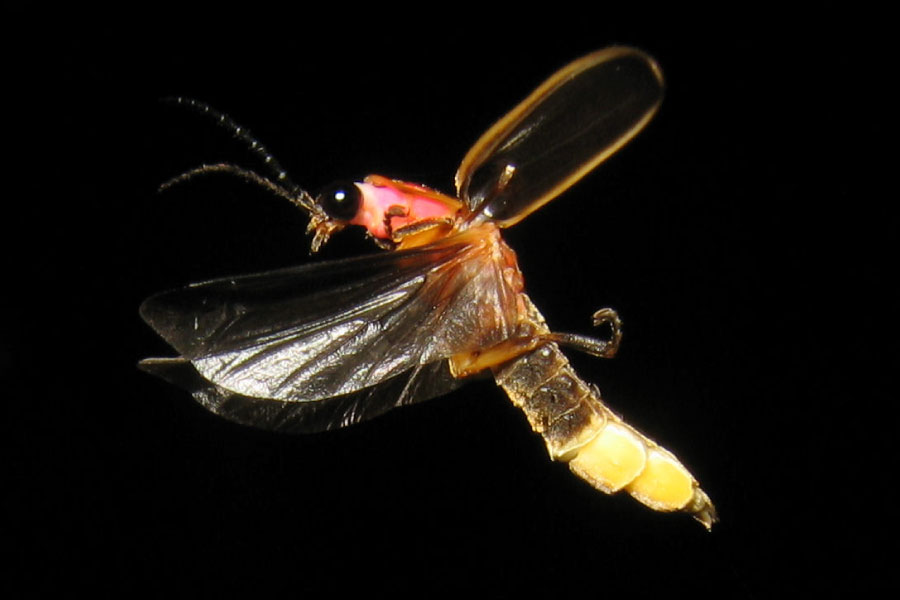
- Type of animal: Insect (family Lampyridae)
- Where plant: Temperate & tropical regions worldwide
Fireflies, despite their name, are not flies; they are beetles belonging to the order Coleoptera. Exterior of the Americas, fireflies are as well known as "glow worms".
There are around 2,000 species in the firefly family unit, Lampyridae. Nearly are nocturnal animals that are able to produce calorie-free via chemical reactions that take role in special parts of the trunk (a procedure known every bit bioluminescence).
Fireflies produce lite mainly to attract mates, simply some species utilize their light to concenter prey.
- You can find out more about beetles on this page: Beetles: The Ultimate Guide
Flight Squirrels
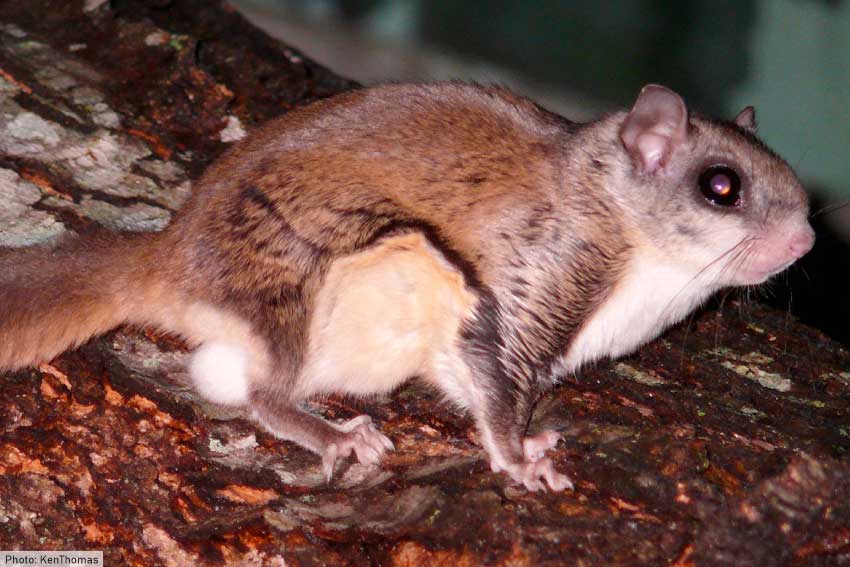
- Type of animate being: Mammal (family unit Sciuridae)
- Where found: Asia, Europe, North America
Flight squirrels are rodents in the squirrel family Sciuridae that are able to glide from tree to tree using a wing-like membrane (known as a patagium) that stretches between their arms and legs.
Most of the world's flying squirrel species are found in Asia, simply some are found in Europe, and three are found in North America.
The North American flying squirrels (southern flying squirrel, northern flight squirrel and Humboldt's flying squirrel) vest to the genus Glaucomys .
Nigh flight squirrels are nocturnal animals. Despite their proper name, they are only able to glide, rather than fly.
- You can find out more about flight squirrels on this page: Flying Squirrel Facts
Galagoes (Bushbabies)
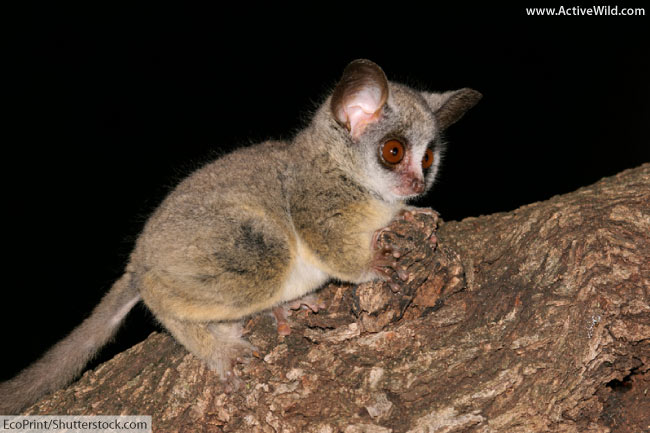
- Blazon of animal: Mammal (Primate, family Galagidae)
- Where found: Africa
Galagoes are a family of pocket-size nocturnal primates found in sub-Saharan Africa. Like many nocturnal animals, galagoes take large eyes for seeing in the nighttime.
Galagoes feed mainly on insects, which they can hunt past audio using their long ears and acute hearing.
There are effectually xix species of galagoes. Each species has its own, distinctive cry. Due to these child-like screams, galagoes are too known as bush babies.
Hedgehogs
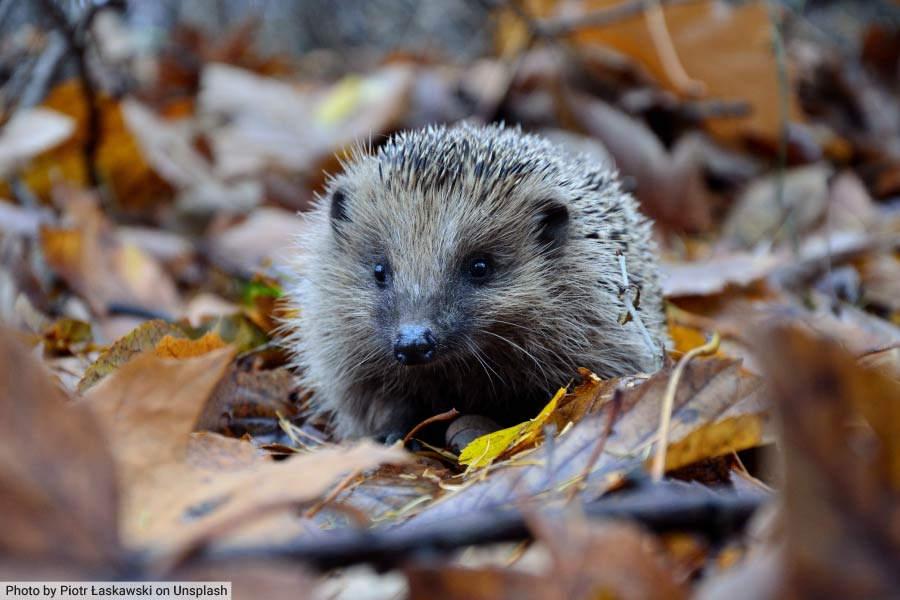
- Type of beast: Mammal (subfamily Erinaceinae)
- Where establish: Europe, Asia, Africa
Hedgehogs are mammals in the subfamily Erinaceinae. There are around xv hedgehog species. All have a coat of protective spines, which are stiffened hairs. If threatened, a hedgehog is able to gyre into a brawl to protect its face and undersides.
Hedgehogs that live in cold regions hibernate during the wintertime.
- You can notice out more than virtually hedgehogs on this page: Hedgehog Facts
Leopard
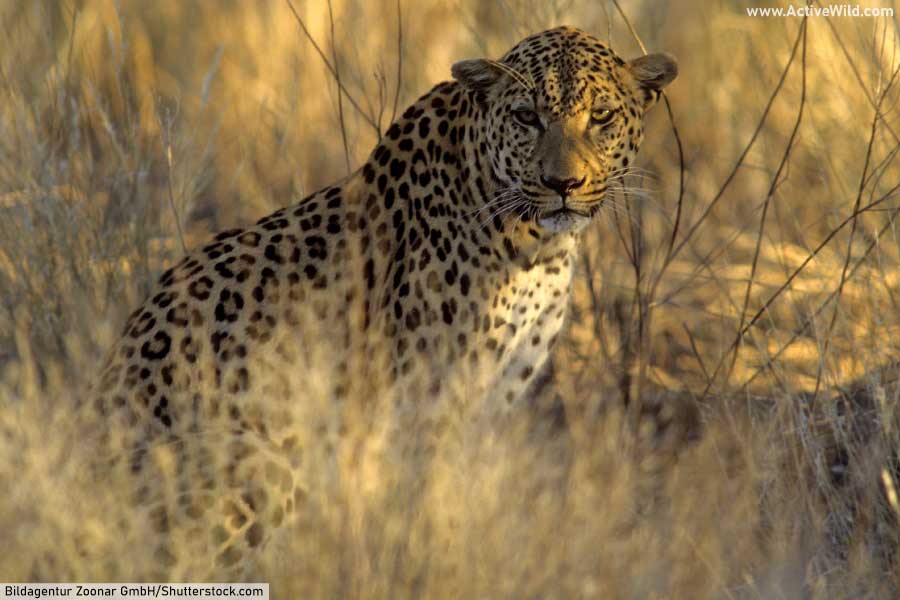
- Type of brute: Mammal (family unit Felidae)
- Where found: Africa, Asia
With its spotted coat, the leopard is i of the nearly distinctive wild cat species. The leopard'south "spots" are actually rings known as rosettes.
Like many wild cats, the leopard is mainly nocturnal. The eyes of all cats have a lining called a tapetum lucidum, which reflects light back through the retina, thereby improving the animal'south night vision. It is the presence of the tapetum lucidum that make'south a cat's eyes glow at night.
The leopard is constitute throughout much of Africa and Asia – an surface area larger than that inhabited by any other wild cat species. Despite its big range, the leopard is threatened and has the conservation condition of "Vulnerable".
- You can find out more about leopards on this page: Leopard Facts
- Y'all can find out more almost wild cats on this folio: List Of All Wild Cats With Pictures & Facts
Night Monkeys
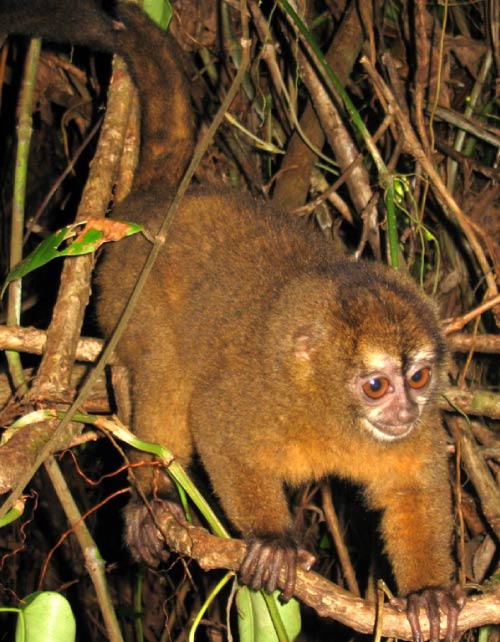
- Type of creature: Mammals (guild Primates, genus Aotus)
- Where found: Central and S America
The eleven species of night monkey are the only truly nocturnal monkeys. Their characteristic big dark-brown eyes provide improved nighttime vision, just are monochromatic (unable to distinguish colors).
The genus name Aotus means "earless"; although night monkeys do accept ears, they are largely covered past fur.
Night monkeys have an acute sense of olfactory property, which helps them find food in the darkness.
Y'all can find out more than most monkeys on the following pages:
- Monkeys: The Ultimate Guide
- Types of Monkeys
Moths
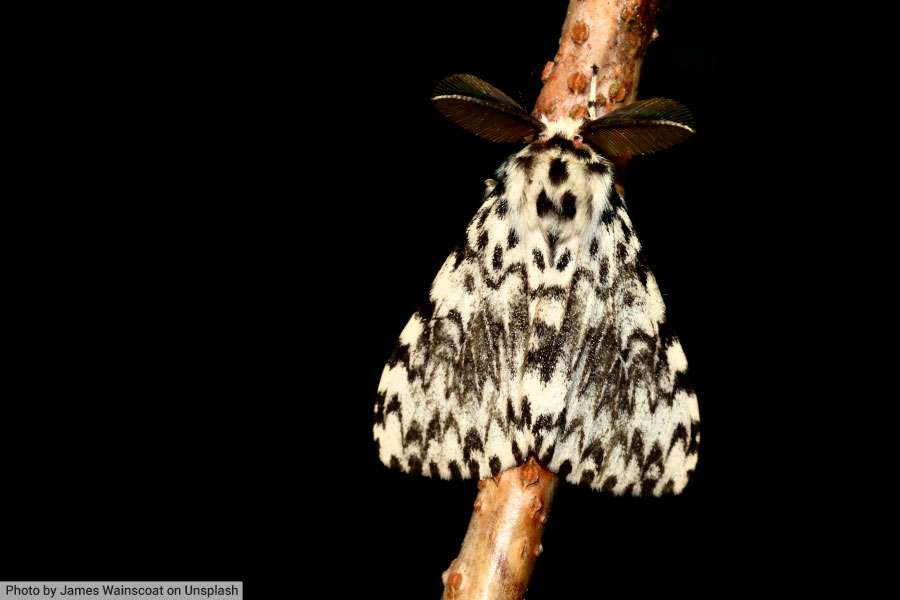
- Type of animate being: Insect (order Lepidoptera)
- Where establish: All continents except Antarctica
The insect order Lepidoptera contains the world'southward moths and butterflies. With around 160,000 species, at that place are over eight moth species to every one butterfly species (there are effectually 18,500 species of butterfly).
Nearly moths are nocturnal, although there are some diurnal species. Nocturnal moths are often attracted to artificial light. The exact reason for this is unknown, but it is thought that moths may use natural light sources (e.g., the moon) to enable them to fly in a directly line.
Yous can find out more well-nigh moths on the following pages:
- The departure between moths and butterflies
- Luna moth facts
Nightjars
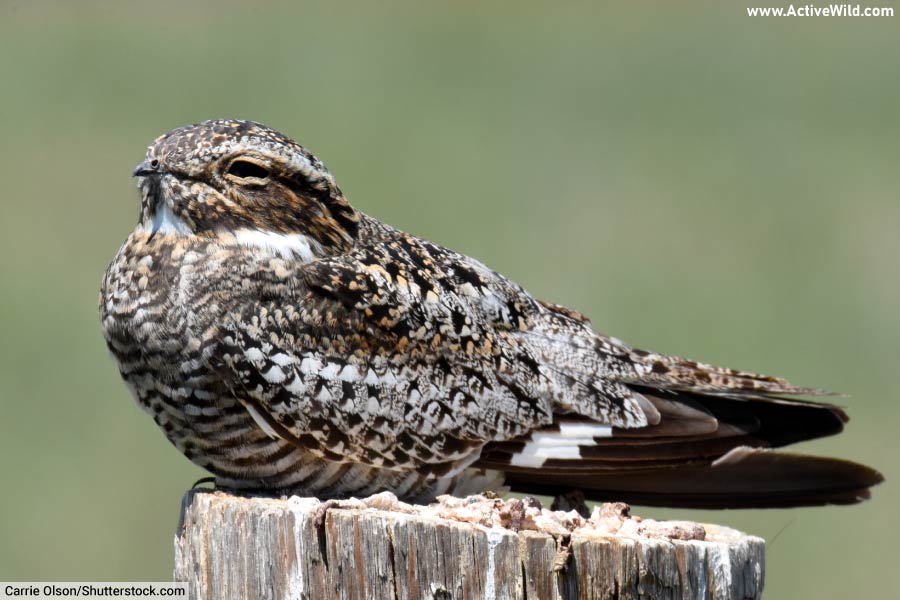
- Type of animal: Bird (family Caprimulgidae)
- Where found: All continents except Antarctica
Nightjars are a family of mainly nocturnal birds that can be identified by their long wings, well-camouflaged plumage and short beaks. Some N American members of this family are called nighthawks.
Like many nocturnal animals, nightjars are the object of superstitious beliefs. In the by, nightjars were known as "goatsuckers" due to the belief that they fed on the milk of livestock.
Opossum
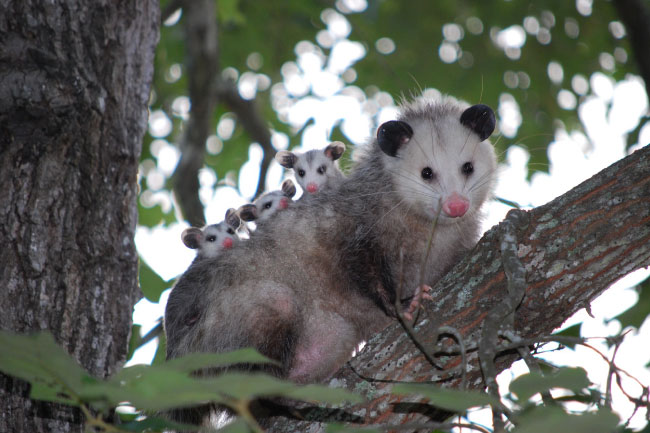
- Blazon of animal: Mammal (Marsupial)
- Where establish: Northward and Due south America
Opossums are a group of over 100 marsupials that are found in the Americas. One of the all-time-known species, and the only opossum plant in the Us and Canada, is the Virginia opossum.
Like all marsupials, opossums are born very early on in their development. The young, which are known equally "joeys", make their fashion to a special pouch in the mother's body. Here they can access their female parent's milk while they go on their development.
Opossums are omnivores that fodder at night.
- You can discover out more about the Virginia Opossum on this page: Virginia Opossum Facts
Owls
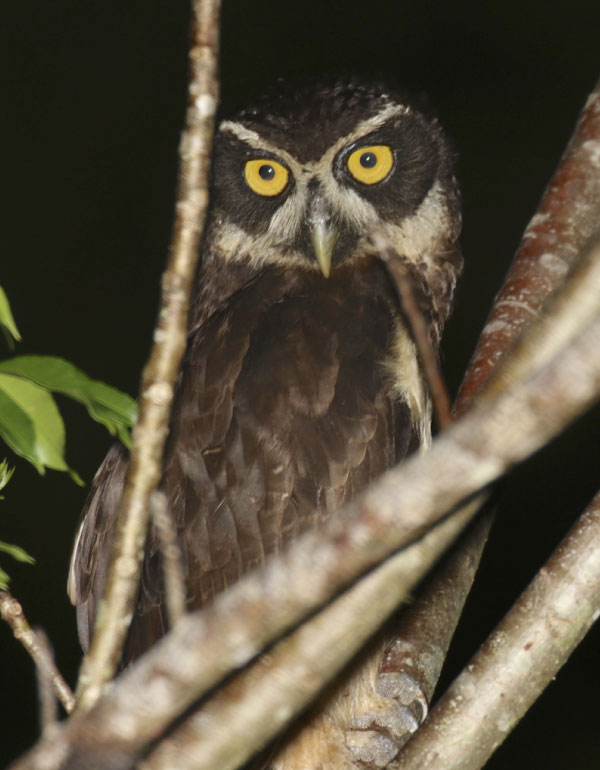
- Type of creature: Bird (order Strigiformes)
- Where found: All continents except Antarctica
Owls are some of the best-known nocturnal animals, although not all of the 240 or so owl species are nocturnal.
Owls have big optics for improved dark vision, equally well as an acute sense of hearing for locating prey in low-light weather.
The ears of owls are positioned asymmetrically on the head – this improves the bird's power to tell the direction from which a sound is coming.
The stiff feathers that brand an owl's round "face" too aid to direct sound towards the ears.
You can find out more about owls on the following pages:
- Barn Owl Facts
- Swell Horned Owl Facts
- Snowy Owl Facts
Raccoon
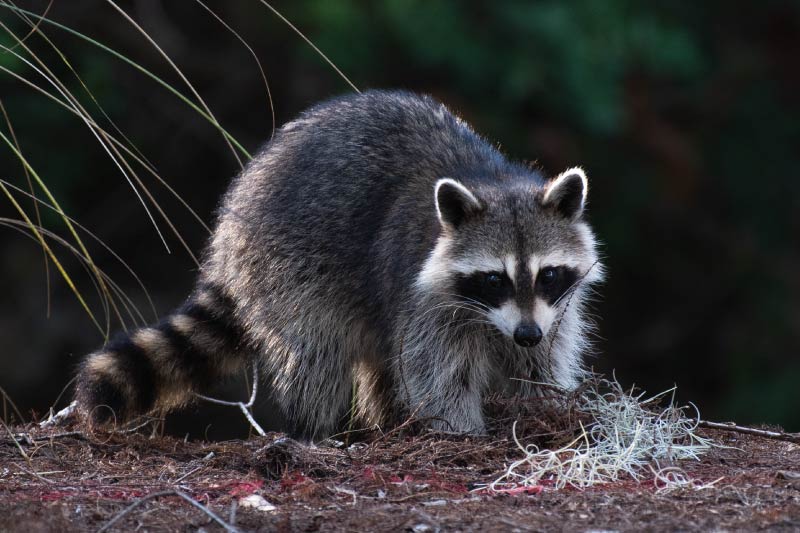
- Type of animal: Mammal (family Procyonidae)
- Where found: North America
With its distinctive black and white face, the raccoon is one of the most recognizable North American mammals. Originally a forest fauna, the adaptable raccoon is now home in a variety of habitats, including towns and cities.
The raccoon is an omnivore with a highly varied nutrition that includes insects, worms, the eggs of both birds and reptiles, fish, and occasionally birds and mammals.
- Y'all tin can find out more near raccoons on this folio: Raccoon Facts
Rats
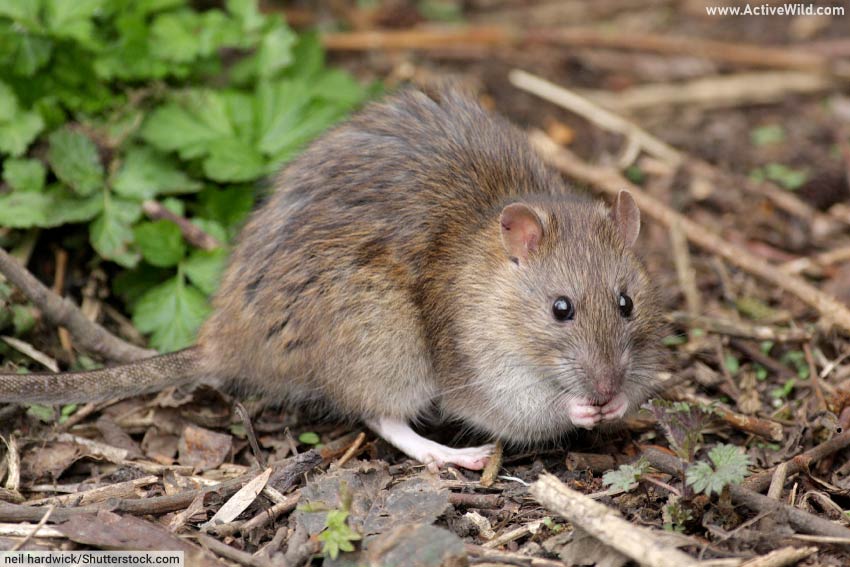
- Type of animal: Mammal (rodent of genus Rattus)
- Where found: All continents except Antarctica
Of the 66 species of genus Rattus, the best known and nigh widespread are the black rat and the slightly larger brown rat.
Rats are often found in human settlements due to the availability of food and shelter. As man has spread around the world, and so rats accept followed, often as stowaways. Today, both the brown and the blackness rat are constitute in nearly of the places that humans live.
Sadly, rats are known carriers of disease and tin crusade great damage to crops and goods. These adaptable rodents are invasive species in many regions, and their introduction can be extremely dissentious to native wild animals.
- You can find out more about rodents on this page: Rodent Facts
Scorpions
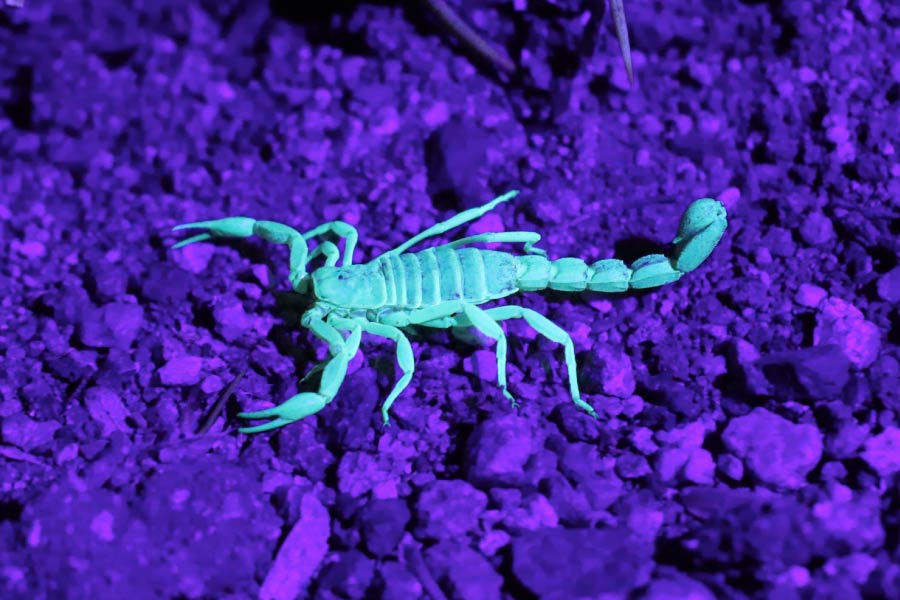
- Type of animal: Arachnid (gild Scorpiones)
- Where found: All continents except Antarctica
Scorpions are a group of arachnids characterized by big claws and a segmented tail, which ends with a stinger. Scorpions take eight legs (in improver to the pincers, which are actually modified mouthparts).
A scorpion's stinger injects venom into a victim. Information technology is used both for hunting and every bit defence force against predators.
Most scorpions are nocturnal. At night, scorpions can be located using ultraviolet light, which makes scorpions glow blue-light-green.
- You can find out more than well-nigh scorpions on this page: Scorpion Facts
- You tin find out more almost arachnids on this page: Arachnids: The Ultimate Guide
Tasmanian Devil
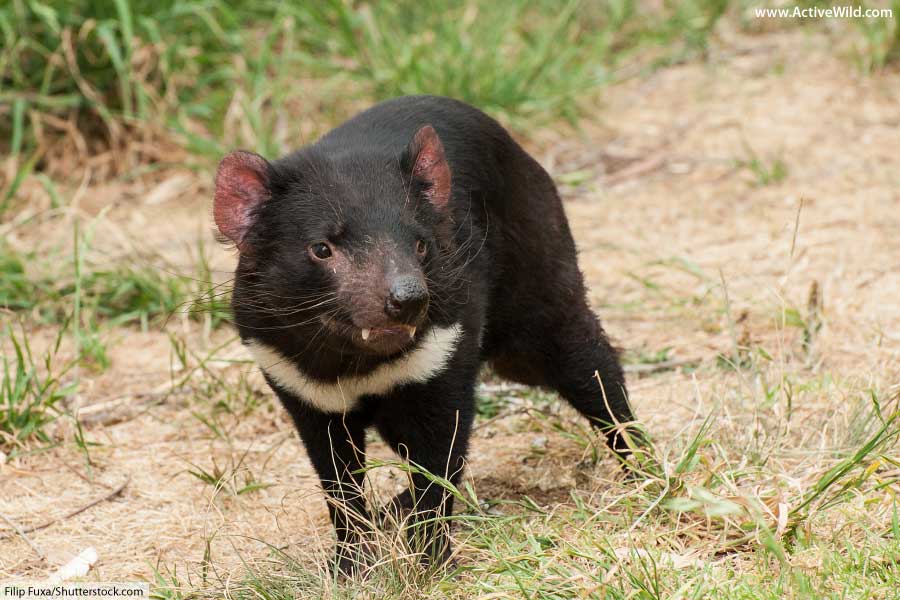
- Type of creature: Mammal (Marsupial)
- Where establish: Australia
The Tasmanian Devil is the largest carnivorous marsupial. It belongs to the family unit Dasyuridae, which is also home to the quolls and other mainly cannibal / insectivorous marsupials.
About wild Tasmanian devils are found on the Australian island state of Tasmania, but recently a small number were reintroduced onto the Australian mainland.
The Tasmanian devil is known for its terrifying night-time screeches and aggressive feeding behavior.
Sadly, this iconic Australian creature is currently threatened by a disease and is now endangered.
- You can find out more about the Tasmanian devil on this page: Tasmanian Devil Facts
Wolf
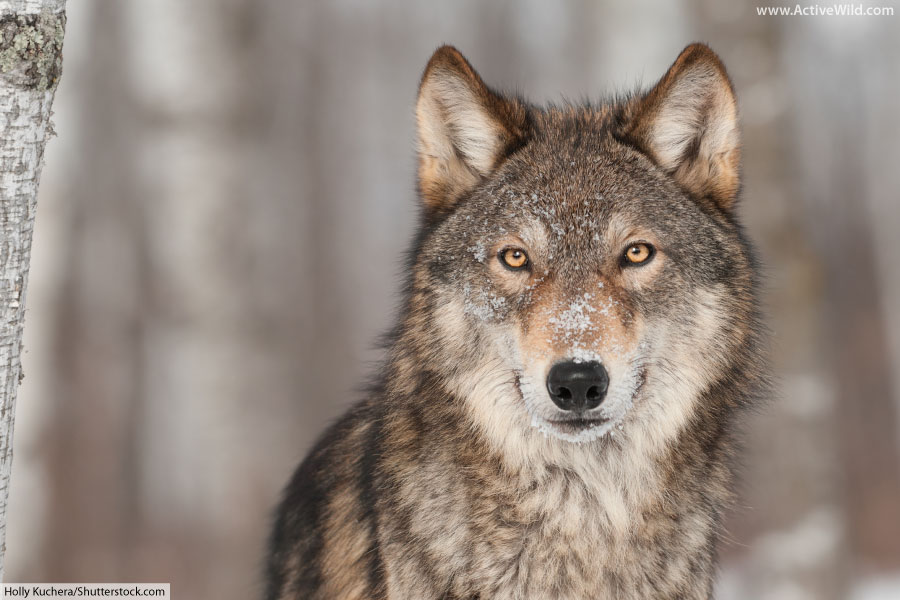
- Type of beast: Mammal (family Canidae)
- Where found: Throughout much of the Northern Hemisphere
The wolf, or grey wolf to give this iconic animate being its full name, is the largest fellow member of the canis familiaris family Canidae.
Wolves are found in many different habitats across their range, but are mainly associated with wilderness and forest areas.
Wolves alive and chase in family groups known every bit packs. Pack hunting gives wolves an advantage over solitary predators, and enables them to overcome prey equally big as bison and moose.
Due to its nocturnal beliefs and characteristic howling, the wolf features in the myths and legends in many dissimilar cultures. It is 1 of the world'south best-known nocturnal animals.
- You can find out more near wolves on this page: Wolf Facts
- You can detect out more well-nigh wild dogs on this page: Wild Domestic dog Species List With Pictures & Facts
Nocturnal Animals Listing: Determination & Farther Reading
We hope that you have enjoyed reading about the many unlike types of nocturnal animals and their adaptions for living at dark.
You can observe out more than nearly animals and the brute kingdom on the post-obit pages:
- Scary Animals List With Pictures & Facts Plus Complimentary Printable Halloween Animal Quiz
- A to Z Animals List With Pictures, Facts & Information
- N American Animals List. Pictures & Facts On The Iconic Animals Of N America, With Gratuitous Printable Worksheet
- Australian Animals List with Pictures & Facts
Source: https://www.activewild.com/nocturnal-animals/
Posted by: mayhewsionech1955.blogspot.com

0 Response to "Most Desert Animals Are Most Active At Night; What Is This Characteristic Called?"
Post a Comment